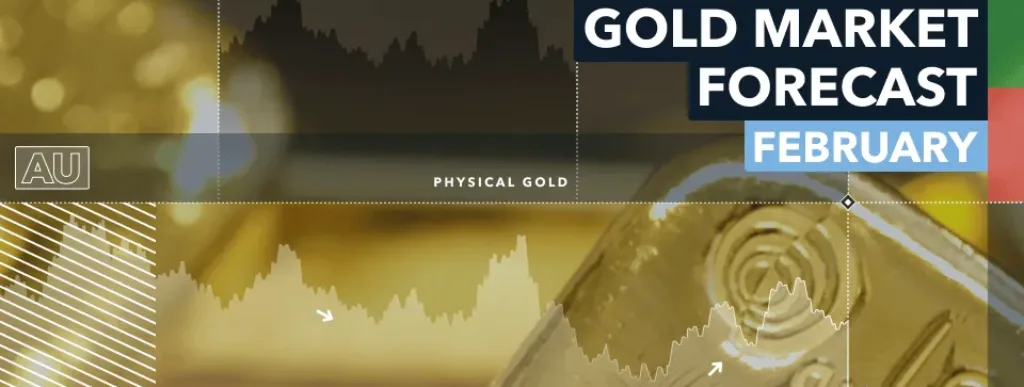After the rally posted in Q4 2023, gold started 2024 showing little signs of volatility. In January, the gold spot price moved in a relatively tiny lateral range between $2,000 and $2,075, with a modest decline of around 2-3%.
Key Takeaways
- Gold has shown little volatility in January, with a modest price decline.
- The first support zones are placed at $1,975 and $1,930, while a clear surpass of $2,075 could open space for new rallies.
- Markets forecast over 100 bps rate cuts from the ECB and the Federal Reserve
Market Drivers for Gold
Analysing the scenario, investors are waiting for a new directionality. After the significant decline of bond yields seen in the final part of 2023 and the rebound of the last few weeks, many traders are still looking to central banks and bond yields as key market drivers for the gold price in 2024.
Expectations are for a series of rate cuts by all the major central banks (excluding the Bank of Japan, which still holds rates at -0.10%). Specifically, markets are pricing around 110 -120 basis points of rate cuts for the Federal Reserve and the European Central Bank.
Rate cuts in focus
The chances of a first-rate cut in March in the US declined after solid macroeconomic data was released in Q4 2023. According to the data collected by CME FedWatchTool, markets are currently pricing around a 50% probability that rates will decline. At the same time, the cost of money should progressively be cut in the following meetings.
The interest rate priced by the futures on the Fed’s fund will see rates between 4.75% and 5,00% in June 2024, compared to the current level of 5.50%. Moreover, markets see an almost 90% chance of having rates at 4.25% or below by the end of 2024 (and around a 60% probability that they are at 4.00%). In other words, investors expect central banks to be more dovish than previously expected.
If those expectations are correct, the rally of gold seen in Q4 has a strong probability of finding new fuel. Otherwise, gold could languish in a lateral trading range, even though the chance for significant falls remains to be seen.
Gold and Geopolitical Drivers
While analysing the drivers for gold, we should also note the geopolitical scenario. Indeed, the war between Russia and Ukraine seems far from an end, while tensions in the Middle East are unsolved, and there are risks of regional escalation. Moreover, international trade is suffering.
According to the data released by the United Nations Conference on Trade and Development (UNCTAD), Egypt’s Suez Canal has seen a 42% year-on-year fall in commercial traffic in the last two months.
This fall is due to the recent attacks on container vessels by Yemen’s Houthis that have prompted a large number of shipping companies to avoid the Red Sea, taking longer (and more expensive) routes. This period of geopolitical uncertainty could result in gold again being called on to serve as a haven asset over the next few months.
Gold Price: Technical Analysis
In the last few weeks, the price of gold danced just above the psychological threshold of $2,000. The first support zones (areas that curb price falls) are at $1,975 and $1,930 – at this stage, the low reached at the beginning of October at around $1,815 seems very distant.
In a bullish scenario, the first target is $2,075, where we can find a solid resistance area, and then at $2,130, at the historical top reached in early December.
Central Bank Gold Reserve Updates
In 2022, central banks bought more than 1,000 tonnes of gold. Last year, we saw a similar trend, as central banks in emerging markets tried to reduce the percentage of reserves allocated to the US Dollar. There are good chances that this positive trend for gold will continue in 2024, supporting the price.
Carlo is an external market analyst for Kinesis Money. With a credential background in Economic Finance and International Exchange (MA), Carlo’s critical analysis of gold and silver markets’ performance is frequently quoted by leading publications such as Forbes, Reuters, CNBC, and Nasdaq.
This publication is for informational purposes only and is not intended to be a solicitation, offering or recommendation of any security, commodity, derivative, investment management service or advisory service and is not commodity trading advice. This publication does not intend to provide investment, tax or legal advice on either a general or specific basis.
Read our Editorial Guidelines here.




